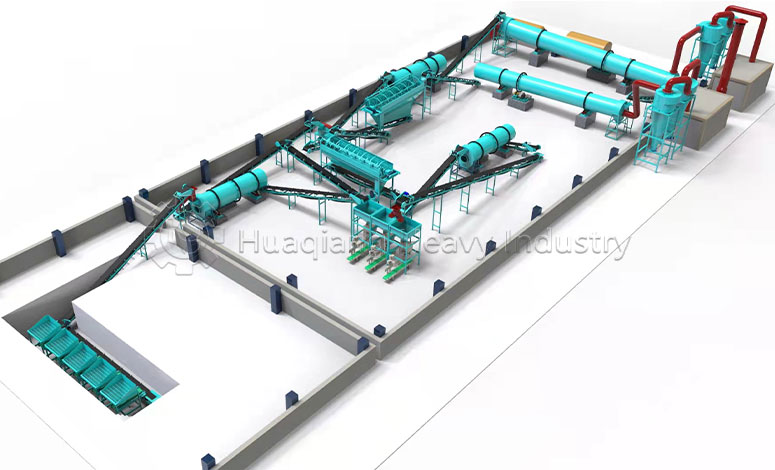How Can Palm Waste Be Turned into Treasure?
In the wave of sustainable agriculture, a seemingly insignificant resource is quietly changing the game—Oil Palm Empty Fruit Bunch (OPEFB). Once considered waste byproducts of palm oil production, these materials are now undergoing a remarkable transformation through innovative organic fertilizer production lines, becoming valuable resources that nourish the land.

Picture this: mountains of palm waste, processed through a series of sophisticated equipment, transformed into nutrient-rich organic fertilizer. This not only solves waste disposal challenges but also provides a sustainable source of nutrients for agricultural production. The entire process resembles a meticulously orchestrated symphony, with each piece of equipment playing an indispensable role.
The cage crusher takes the stage first, breaking down the tough fruit bunches into manageable pieces; then, microorganisms in the fermentation equipment begin their work, converting organic matter into plant-accessible nutrients; the mixer ensures even distribution of various components; the disc granulator shapes the mixture into user-friendly pellets; finally, drying and cooling equipment complete the product’s formation and packaging.
This system not only efficiently processes OPEFB but can also integrate other organic wastes, such as livestock manure and crop straw, to create comprehensive compound organic fertilizers. This circular economy model both reduces environmental pollution and enhances soil health—a true win-win scenario.
As global demand for sustainable agriculture grows, this technology of transforming palm waste into gold is gaining increasing attention. It not only provides plantations with additional revenue streams but also offers practical solutions to global soil degradation and food security challenges.
